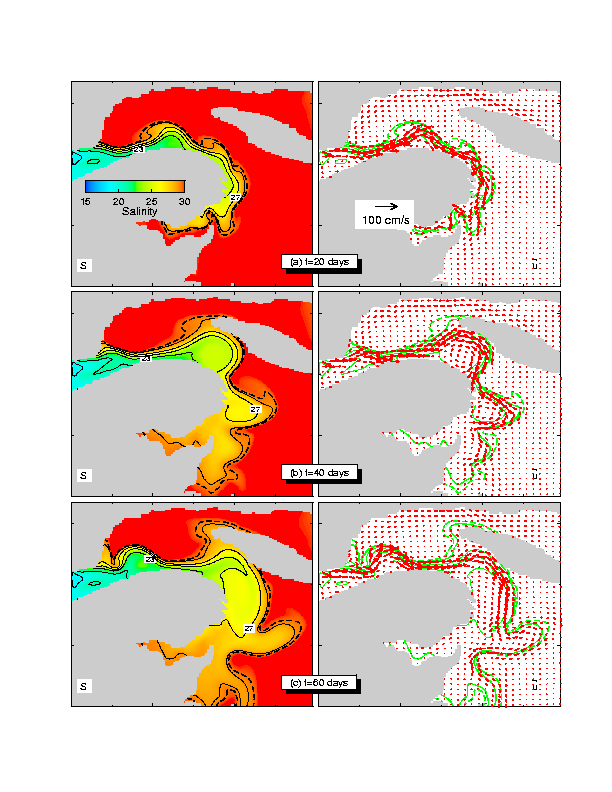


The early developments of the estuarine plume and coastal current system driven by the river discharge in the both basins are qualitatively similar. After a short-period adjustment, a buoyant plume is developed near the estuary mouth, with a surface-intensified coastal current advecting the estuarine water seaward in the direction of Kelvin wave propagation. The coastal current initially follows the coastline closely but later becomes unstable with backward-breaking waves developed along the outer edge of the current. The model results were explained in more details in the following two manuscripts:
(A) The Gaspe Current and Cyclonic Motion Over the Northwestern Gulf of St. Lawrence (In Proceedings of International Conference on Estuarine and Coastal Modeling.
Please click here to download the ps-file of the paper.
(B) Dynamics of a Buoyancy-Driven Coastal Jet: The Gaspe Current
(submitted to Journal of Physical Oceanography)
Please click here to download the ps-file of the paper.
Animation of Process studies of the Gaspe current




